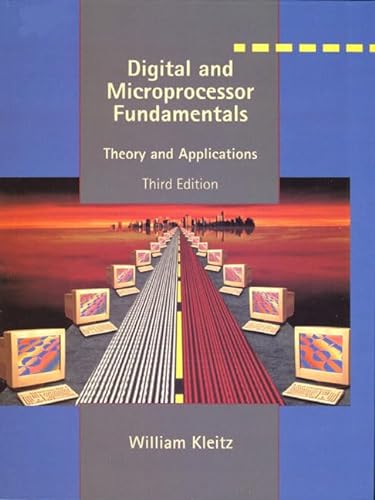
Synopsis
This book explores practical applications and problems using industry-standard ICs, circuits, and schematics that readers encounter on the job. Focusing on the "must know" essentials, it provides single-volume coverage of the fundamentals of digital electronics and microprocessors, exploring both hardware and software principles. Discussions of today's most recent tools and techniques includes sections on ASCII code; applications of number systems; annotated data sheets; biCMOS, LVT, and HCT logic families; arithmetic circuits; adder ICs; system design applications using microcontrollers; practical I/O considerations; octal D flip-flop interface to a microcontroller; and the SDK-85 microprocessor trainer. For engineering/engineering technology programmers and system designers.
"synopsis" may belong to another edition of this title.
From the Back Cover
This book explores practical applications and problems using industry-standard ICs, circuits, and schematics that readers encounter on the job. Focusing on the "must know" essentials, it provides single-volume coverage of the fundamentals of digital electronics and microprocessors, exploring both hardware and software principles. Discussions of today's most recent tools and techniques includes sections on ASCII code; applications of number systems; annotated data sheets; biCMOS, LVT, and HCT logic families; arithmetic circuits; adder ICs; system design applications using microcontrollers; practical I/O considerations; octal D flip-flop interface to a microcontroller; and the SDK-85 microprocessor trainer. For engineering/engineering technology programmers and system designers.
"About this title" may belong to another edition of this title.
Search results for Digital and Microprocessor Fundamentals: Theory and...
Digital and Microprocessor Fundamentals: Theory and Applications (3rd Edition)
Seller: Giant Giant, Reston, VA, U.S.A.
hardcover. Condition: UsedGood. Good condition.No marking/highlighting.Cover and pages may show some wear.Not Satisfied? Contact us to get a refund. Seller Inventory # BRG-33_8_113
Digital and Microprocessor Fundamentals: Theory and Applications (3rd Edition)
Seller: HPB-Red, Dallas, TX, U.S.A.
Hardcover. Condition: Good. Connecting readers with great books since 1972! Used textbooks may not include companion materials such as access codes, etc. May have some wear or writing/highlighting. We ship orders daily and Customer Service is our top priority! Seller Inventory # S_302108942
Digital and Microprocessor Fundamentals: Theory and Applications (3rd Edition)
Seller: Phatpocket Limited, Waltham Abbey, HERTS, United Kingdom
Condition: Good. Your purchase helps support Sri Lankan Children's Charity 'The Rainbow Centre'. Ex-library, so some stamps and wear, but in good overall condition. Our donations to The Rainbow Centre have helped provide an education and a safe haven to hundreds of children who live in appalling conditions. Seller Inventory # Z1-H-013-01394
Buy Used
Ships from United Kingdom to U.S.A.
Quantity: 1 available
